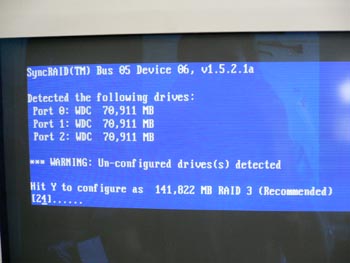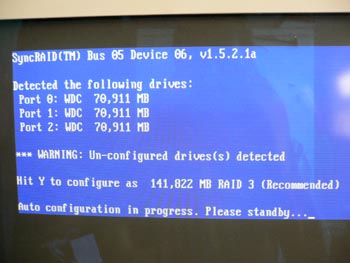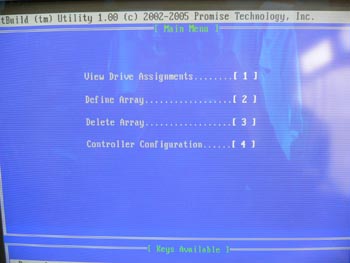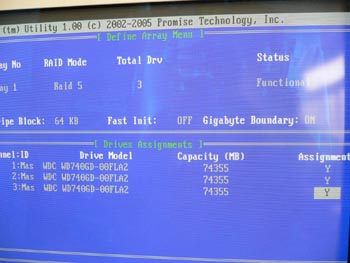Setting Up
Before diving into benchmarks I want to look at just how easy setting up and managing a RAID array can be. Array creation needn't be difficult, nor should knowing when something is wrong and subsequently rectifying the problem. With that in mind, let's take a look first at how easy it is to get an array setup with these two cards. Please excuse the photography, given that it's quite difficult to grab photographs from the output of a monitor.
Revo 64 BIOS
The first time you power up a system with the Revo 64 installed, it will detect any unconfigured hard drives attached to it. Auto configuration will recommend a RAID mode. Using three disks, I was recommended to run with RAID 3. Press the "Y" key and the Revo 64's BIOS will take care of the rest

It really does take care of the rest too. Nothing more is required to actually create the array. I was extremly impressed with how a single keystroke resulted in a fully operational RAID array, ready to be formatted and used by the Operating System.


Of course, further configuration can be performed through the BIOS, although the RAID management software can do exactly the same. Flicking through the various option screens of the BIOS I found it fairly easy to understand. Some of the confirmation requests are a little confusing purely because of how textual the system is. It takes a few moments to digest the information presented on screen, but then it's happy sailing.
FastTrack SX4 BIOS
Alas, no auto configuration here, so I had to dive into the BIOS to create an array.

While still text driven, the SX4 BIOS has a better layout than the Revo 64 BIOS. Fewer confirmations and yes/no questions and more boxes with options to be changed. I found it, for the most part, easier to use.

If you know what you're doing you can create a new array in the SX4 BIOS in a matter of seconds.

Pretty much everything you can do in the BIOS can be done through software utilities in Microsoft Windows, so why bother? Well, if you're booting from one of these RAID cards, you'll need the array configured before you can even install the Operating System. Also, if you're using an OS that doesn't have the card's RAID management utility available for it, the BIOS becomes invaluable.









